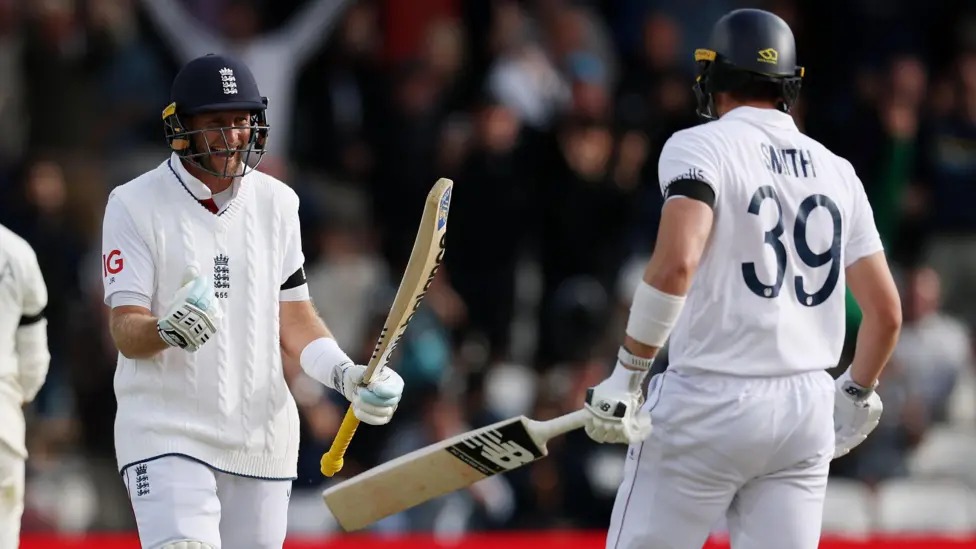- Jun 30, 2025
Why Test Cricket Feels Like a Protected Passion — And Why It Deserves To Be
- Jul Wed, 2025
- in Sports

Test cricket has always had its loyal fans — and their enthusiasm resurfaced in full force after England’s emphatic win over India in the first Test.
The day after England chased down 371 runs at Headingley with confidence, social media buzzed with declarations of love for the five-day format: “Test cricket is the pinnacle,” “the Rolls Royce of the sport,” “nothing compares.” Of course, it came with a side of criticism directed at formats like The Hundred.
These passionate bursts of appreciation often feel like a subculture affirming its identity — a group defending its unique, often misunderstood love. Like fans of obscure hobbies or niche bands, Test cricket lovers find validation in moments like these.
Unlike reactions to thrilling football matches, dramatic golf finishes, or epic Wimbledon encounters, Test cricket prompts a deeper kind of affirmation. This is because Test cricket, unlike any other sport, fights battles on multiple fronts — and its biggest challenge comes from within.
🏏 A Format Divided by Its Own Diversity
Cricket is unique in its format diversity, but this variety has become more of a battleground than a strength. No other major sport has fractured itself like this. While T20 leagues and tournaments like The Hundred thrive commercially, they’ve also fragmented the audience and alienated traditional fans.
Take The Hundred: While the idea of a franchise competition is justified, its launch messaging — aimed at people who supposedly “don’t like cricket” — sent the wrong signal to existing fans. As a result, traditionalists have dug in, defending their beloved format even harder.
Test cricket has suffered from neglect, erratic scheduling, and financial priorities driven by TV deals. If it's allowed to fade into obscurity, cricket as a whole will lose much of its depth and soul.
A sensible solution could be scheduling separate windows for each format — similar to how football and rugby organize domestic and international games. But this takes bold leadership — something cricket's governing bodies have often lacked.
📈 Ironically, Test Cricket Has Never Been Better
Despite being under constant threat, the quality of Test cricket on the field is arguably at an all-time high.
In 2024 alone, we’ve seen underdog triumphs like the West Indies winning in Brisbane, England outplaying India in Hyderabad, and Sri Lanka making history at The Oval. South Africa finally overcame Australia to win the World Test Championship in a thrilling Lord’s finale.
Elsewhere, the West Indies nearly toppled Australia again in Barbados, and a 19-year-old Lhuan-dre Pretorius broke records in Zimbabwe by becoming the youngest South African to score a Test century.
Stats back it up: the average run rate across Test matches over the past three years has climbed to 3.60 — the highest ever. Only 10% of games end in draws now, compared to over 20% in the past two decades, and more than 40% historically.
England’s “Bazball” approach — ultra-aggressive and fearless — has redefined how Tests can be played. Since Ben Stokes and Brendon McCullum joined forces, England have drawn just one of 37 matches — a rain-washed result. Their insistence on playing for wins has removed the safety net of a draw and brought new excitement to the format.
Opponents are constantly on edge, unsure how to counter England’s relentless push. Fans, meanwhile, watch with a sense of thrilling uncertainty — not just about if England will force a result, but how they’ll do it.
⚔️ A Crucial Series in Focus
The ongoing series against India, paired with the upcoming Ashes, marks a significant stretch for Test cricket. For the next seven months, the format takes center stage in a way rarely seen in recent memory.
Headingley felt like the perfect opening chapter. England were expected to win, and perhaps India should’ve capitalized — dropped catches and a missed chance to dismiss Harry Brook off a no-ball proved costly.
Now, the pressure is on India heading into Edgbaston. Will they make bold changes, perhaps bringing in wrist-spinner Kuldeep Yadav or gambling again on their bowling depth?
England appear steady, with Jofra Archer possibly returning at Lord’s — the ground where he made his unforgettable debut six years ago.
For the good of the series and the sport, India need a win. A 1-1 draw leaves everything to play for. But a 2-0 deficit? That might be game over.
Test cricket is alive, unpredictable, and emotionally rich. The next chapter might just be another classic.





